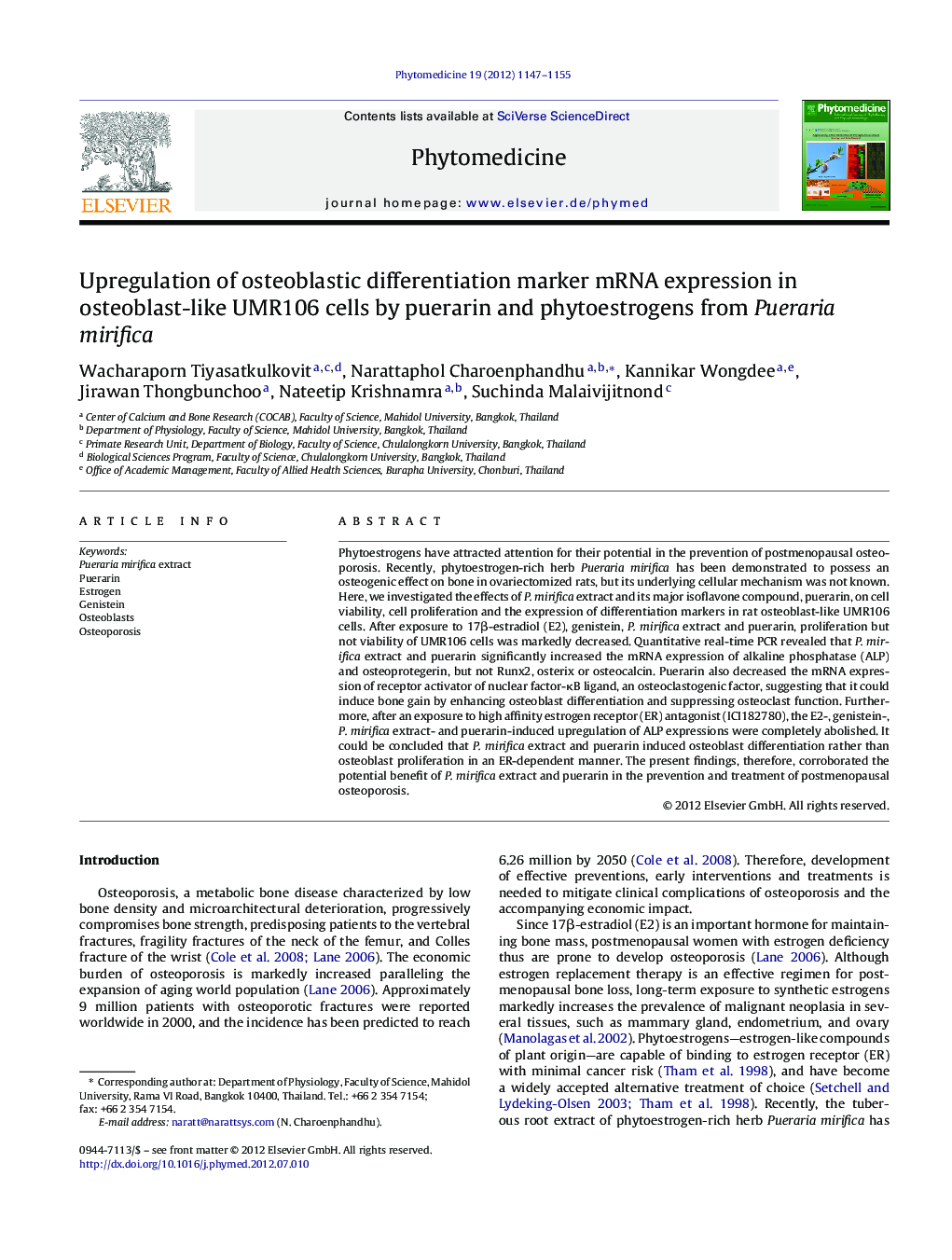| Article ID | Journal | Published Year | Pages | File Type |
|---|---|---|---|---|
| 5816757 | Phytomedicine | 2012 | 9 Pages |
Phytoestrogens have attracted attention for their potential in the prevention of postmenopausal osteoporosis. Recently, phytoestrogen-rich herb Pueraria mirifica has been demonstrated to possess an osteogenic effect on bone in ovariectomized rats, but its underlying cellular mechanism was not known. Here, we investigated the effects of P. mirifica extract and its major isoflavone compound, puerarin, on cell viability, cell proliferation and the expression of differentiation markers in rat osteoblast-like UMR106 cells. After exposure to 17β-estradiol (E2), genistein, P. mirifica extract and puerarin, proliferation but not viability of UMR106 cells was markedly decreased. Quantitative real-time PCR revealed that P. mirifica extract and puerarin significantly increased the mRNA expression of alkaline phosphatase (ALP) and osteoprotegerin, but not Runx2, osterix or osteocalcin. Puerarin also decreased the mRNA expression of receptor activator of nuclear factor-κB ligand, an osteoclastogenic factor, suggesting that it could induce bone gain by enhancing osteoblast differentiation and suppressing osteoclast function. Furthermore, after an exposure to high affinity estrogen receptor (ER) antagonist (ICI182780), the E2-, genistein-, P. mirifica extract- and puerarin-induced upregulation of ALP expressions were completely abolished. It could be concluded that P. mirifica extract and puerarin induced osteoblast differentiation rather than osteoblast proliferation in an ER-dependent manner. The present findings, therefore, corroborated the potential benefit of P. mirifica extract and puerarin in the prevention and treatment of postmenopausal osteoporosis.
Graphical abstractDownload high-res image (222KB)Download full-size image
